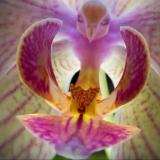
上传成功
举报
转发
2017年08月14日

[图片]#茉莉花 掉叶子的表现
少量落叶
茉莉花在冬季的时候,如果是少量的掉叶子,大部分的叶子都是保持绿色的话,这是常绿休眠,在温度保持15℃以上的时候会出现。
大量落叶
茉莉花在冬季的时候,大面积的掉叶子,但是枝条还是比较健康的,这就是落叶休眠,在温度保持在3℃——15℃之间的时候出现。
落叶+冻害
在冬季的时候,茉莉花的叶子不仅是大量的掉,它还容易遭受冻害。
[图片]茉莉花冬季掉叶子的原因
茉莉花在冬季的时候掉叶子,其中最重要的一个原因就是温度,此外也有其他的影响。
在冬季的时候,如果气温过低,就会引发茉莉花掉叶子,严重的时候还会产生冻害的。此外,可能是摆放的位置有问题,茉莉花放在了容易受到冷风的地方,被冷风一吹就会受冻。还可能是浇水太少或者太多的原因,浇水太多或者太少,盆土就会处于过干或者过湿的现象,这是不利于茉莉花的生长的,使其落叶。
[图片]茉莉花冬季叶子掉光了能活吗
在冬季,如果茉莉花的叶子已经掉光了,那就先看看它的枝干,如果枝干还是青绿色的,那就表示茉莉花还有得救,首先就要先根据茉莉花的掉叶子的原因,来改变它的现状,使其不要在继续掉叶子了。等到了清明的时候,将茉莉花搬到室外半阴的地方,剪掉枯枝,停止施肥,浇水的时候要在盆土干透后再浇,下雨天的时候可以淋雨,这样养护一段时间,随着温度的上升,在茉莉花的叶芽处就可以重新长出枝叶了。
[图片]
...显示更多
文章
滚动加载更多...
article






